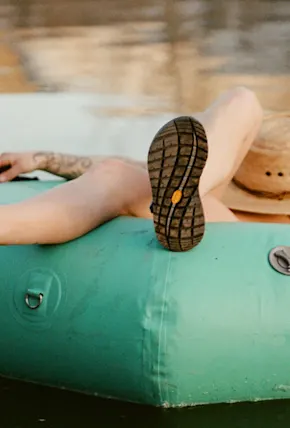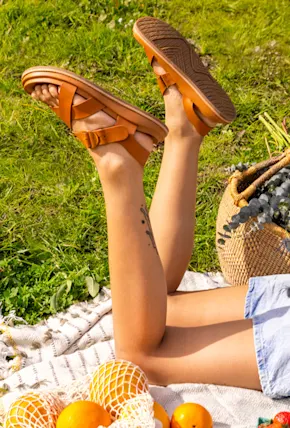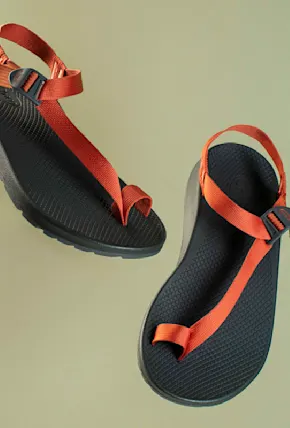In 2017 we saw Chaco partner with the National Park Foundation, Topo Designs, Howler Bros, among others. How does Chaco choose who to collaborate with?
The product collaborations are derived a couple ways. One is that we work really closely with our Japanese distributor and through them, we’ve been able to do some really cool collaborations with Pilgrim Surf & Supply, A Bathing Ape, Stussy, Beams–all of these really awesome, trendy retailers and brands.
In Japan we’ve been kind of accepted and adopted into streetwear—technical wear and outdoor gear is very easily appropriated to street style in Japan, and the minimalism of our sandal products is very much tuned into that. And I think some of that energy has transferred over—what starts in Japan eventually finds its ways to San Francisco, and L.A. and New York. So that’s an element of it.
And then from inside my office, I’m personally inspired by newer, upstart, entrepreneurial brands—think Topo Designs or United By Blue—because I think one of the things that made the outdoor industry so special in the first place is it was built by that breed of rebel entrepreneur.
If you think about the OG outdoor brands—Patagonia, North Face, REI—they came about because of a need that wasn’t being serviced. They just started doing it, and they did it their way. And I think over the course of 30-some years the outdoor industry has become more normalized, like the sporting goods industry, so it’s really important to recognize that we have a really rich history of entrepreneurship in our space.
These brands that are new and churning shit up, coming in and disrupting their industries, whether it’s through Made in the USA, or through really unique brand positioning, or just really awesome storytelling—I think that’s something worth celebrating.
Any upcoming products or projects you can let us in on?
We have a kickass new boot called the Frontier Waterproof for men. It’s a perfect urban boot—as comfortable as our sandals, weather-ready, and just looks sick.
This coming spring, in March, we’re going to be dropping the next iteration of our National Park Foundation collection, so keep an eye out for that. And then next summer, keep an eye out for Topo Designs x Chaco, 2.0.
From video lookbooks to content-heavy campaigns featuring real people, it’s clear visuals are key to Chaco’s identity. As brand manager, can you speak to this approach?
I think when you’re talking about the outdoors, in a lot of ways we’re not actually selling products. We’re selling the idea of what you could potentially do with it. To use a metaphor I heard once: If you’re Super Mario, you’re not buying the flower that lets you shoot fireballs, you’re buying the actual vision of Mario being bigger, faster, and throwing fireballs. You know what I mean? You don’t sell the product, you sell who you’re going to become once you have the product.
So it’s kind of the same deal with Chaco. I think most people who participate in our brand—very few of them will ever go whitewater rafting. Some of them may never climb a mountain or ever live in a mountain town, but I think what’s common across all of them is these people tend to be adventurous in spirit and they want to express that. And investing in a pair of kickass sandals that will last 20 years is a really clear way to send those signals to the people around you.
When we set out to plan a shoot or design a campaign, I try to keep that in mind. Most of our productions are actual experiences – taking people into the wild, out on whitewater, or on a road trip—and documenting what happens. There’s an authenticity you can uncover in those moments. The individuals we photograph or video on those trips are themselves having a discovery about what possibilities our products can create in their lives.
We hope to not just capture the beautiful landscapes and epic scenery, but the sense of accomplishment and satisfaction, scrapes and bruises, laughter and the forging of memories that happens in the process too.














